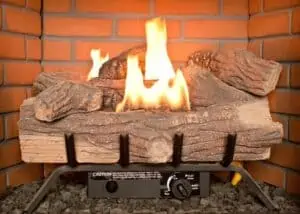How to Build a Fireplace?
Building a fireplace can be an enjoyable project for a do-it-yourselfer. With the right tools and knowledge, you can create a gorgeous, well-built masonry fireplace that will add warmth and character to any home.
(Looking for”Fireplace Door Repair“? Contact us Today!)

Depending on your preferences and the size of your home, there are a variety of ways to build a fireplace. One option is to use a pre-fabricated unit that requires no framing. Another is to build a traditional wood-framed fireplace that uses common 2 x 4-dimensional lumber. In both cases, you’ll need to pay attention to the sizing and construction details of the unit, as they are typically outlined in the manufacturer’s instructions.
If you’re using a pre-fabricated unit, start by determining the size and shape of the opening. Once you’ve settled on the dimensions, you can start laying out the wood box.
You’ll need two full-size blocks on either side of the firebox, and one half-size block in the center. For added support, you’ll also want to cut a 48-inch steel angle and place it across the front of the firebox as a lintel.
For a more modern look, you can consider adding an inverted or upside-down fire construction technique to your fireplace. This will give your logs a more dramatic appearance.
In addition, the “top-down” method results in less smoke and flames because it’s more direct to the embers. This is a great way to keep your home more breathable, as long as you make sure you have enough kindling and plenty of firewood.
The final step in building a fireplace is to set the firebox in a refractory mortar and a layer of bricks. The lintel bricks are laid on top, aligned flush with the front edge of the firebox, and a piece of foam is inserted to prevent them from bonding with the bricks below.
Once the lintel is in place, Mike Mehaffey starts laying the bricks that will butt into it. He starts at the front edge of the firebox and works his way back, arcing in the wall courses to help them fill in evenly from the front, then checking the level along the face for consistency and accuracy.
As he builds the walls up, Mehaffey uses a straightedge to check that the bricks are level and in-plane. He also taps any stray bricks in place with the handle of his trowel as he works.
For the refractory mortar joints, Mehaffey tries to keep them about 1/16 in. thick, but if he gets them too tight, the bricks will be squeezed out. To avoid this problem, he butters the mortar on only slightly thicker than the joint he wants and bevels the edges to minimize excess mortar.
Eventually, he finishes off the arc, beds in a full row of bricks and starts to tuck the mortar down into the flue to finish off the opening. He’ll repeat this process as much as possible, leaving a full arc.
Before you begin installing the hearth, it’s important to note that a framed firebox is more stable than a freestanding one. This is because a firebox is designed to withstand the weight of the fuel and air that will be passing through it, whereas a freestanding fireplace can be more subject to shifting soils and other environmental factors. To ensure the integrity of your fireplace, be sure to build a 4″-8″ reinforced concrete pad on which you will stand unit and follow local codes regarding the minimum distance between combustible materials and the unit.

